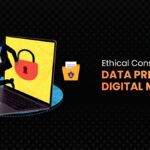The digital world is a whirlwind. Scrolling thumbs navigate a constant stream of information, each vying for a sliver of our precious attention. This begs the question for UI/UX consultants: should we cater to fleeting attention spans with quick-hit interactions, or strive for deeper engagement that fosters meaningful experiences?
There’s a seductive allure to designing for short attention spans. The logic seems sound: people are busy, and bombarded with content. We need to grab their attention fast, deliver the message efficiently, and move on. Think bite-sized social media posts, lightning-fast loading times, and interfaces that prioritize immediate gratification.
This approach certainly has its merits. It caters to the “on-the-go” nature of modern life, allowing users to accomplish tasks quickly and conveniently. Imagine needing to book a flight in a ten-minute break – a streamlined, attention-grabbing interface would be a lifesaver.
However, solely focusing on fleeting attention risks creating a shallow user experience. We become conditioned to skim content, rarely delving deeper. Nuances get lost, and the potential for rich interactions diminishes. It’s like flipping through a magazine filled with eye-catching headlines, but never actually reading the articles.
Let’s consider the power of deep engagement. Imagine an educational app that doesn’t just present facts, but uses interactive elements, personalized learning paths, and storytelling to truly captivate the user. This fosters a deeper understanding and retention of knowledge, transforming passive consumption into active exploration.
Here’s the good news: we don’t have to choose between extremes. The ideal UI/UX design agency strikes a balance between grabbing attention and fostering engagement. Let’s explore some strategies:
1. The Art of the Hook:
First impressions matter. We need to entice users within the first few seconds – think of it as the digital equivalent of a captivating book opening. Utilize strong visuals, clear CTAs (Calls to Action), and concise, well-written introductions. This doesn’t have to be manipulative – think of it as setting the stage for a compelling experience.
2. Chunking Information for Focus:
Break down complex information into easily digestible chunks. Use clear headings, bullet points, and visuals to guide the user’s eye. Think of a well-structured news article – it delivers the core information upfront, then allows readers to delve deeper if interested.
3. Microinteractions: Delight in the Details:
Small, well-designed interactions can make a big difference. Subtle animations, satisfying button clicks, and progress indicators all contribute to a more engaging experience. These microinteractions are like sprinkles on a cupcake – they add a touch of delight that keeps users coming back for more.
4. Gamification: The Power of Play:
Incorporating game mechanics like points, badges, and leaderboards can be highly motivating. This is particularly effective in educational apps or loyalty programs, where the user feels a sense of accomplishment and is encouraged to keep exploring. However, be cautious – gamification should enhance the experience, not overshadow the core purpose of the application.
5. Progressive Disclosure: Cater to Different Needs:
Don’t overwhelm users with information upfront. Instead, use progressive disclosure to reveal details gradually based on user interaction. Think of an accordion menu that allows users to expand specific sections as needed. This caters to both those seeking a quick overview and those desiring a deeper dive.
6. Prioritize User Control:
Empower users to customize their experience. Allow them to adjust font sizes, toggle animations, and personalize layouts. This fosters a sense of ownership and increases engagement.
7. Design for Scannability:
Even when presenting detailed content, make it scannable. Utilize bold text, headings, and white space to guide the user’s eye. This caters to those who may skim-read initially but can easily delve deeper if a specific section piques their interest.
8. The Power of Storytelling:
Weave narratives into your design. Use case studies, real-world examples, and compelling visuals to connect with users on an emotional level. This fosters a deeper connection and makes even complex information more engaging.
9. Embrace White Space:
White space, the empty space on your interface, isn’t wasted space. It allows elements to breathe, preventing a cluttered, overwhelming experience. This fosters focus and improves readability, encouraging deeper engagement with the content.
10. The Value of Feedback Loops:
Integrate feedback loops into your design. Consider progress bars, completion indicators, and clear error messages. This keeps users informed, motivates them to continue, and prevents frustration.
By employing these strategies, we can create UI/UX experiences that are both captivating and engaging. We can grab attention without resorting to cheap tricks, and foster deep engagement without sacrificing user convenience.
Ultimately, the key lies in understanding your target audience and their needs. A news app might prioritize scannable headlines and quick summaries, while a learning platform could delve deeper with interactive elements and personalized learning paths.
The fight for attention spans is a reality of the digital age. However, as UI/UX consultants, we don’t have to settle for fleeting clicks or shallow experiences. By employing a thoughtful design approach that balances attention-grabbing elements with strategies that foster deep engagement, we can create user experiences that are both captivating and meaningful.
Let’s strive to design not just for fleeting glances, but for moments of genuine connection, moments where users are not just captivated by our interfaces, but captivated by the ideas and experiences we bring to life.
In conclusion, remember, the human desire for connection and meaningful experiences remains constant. By embracing the power of captivating design, and fostering deep engagement, we can create UI/UX experiences that truly resonate with users, leaving a lasting impression long after the last click.



